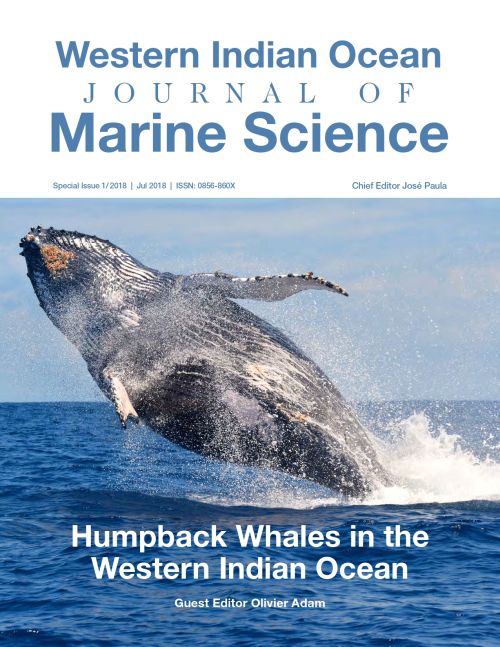Main Article Content
Do the new-born calves of humpback whales (Megaptera novaeangliae) have a preference to position themselves at the side of their mother?
Abstract
Spatial proximity to mothers is a key factor in offspring survival in group-living mammals. In humpback whales (Megaptera novaeangliae), an extreme migrating species, new-born calves stay close to their mothers. This proximity can be modified by the presence of other congeners or other species. The spatial relationship between mother and calf can therefore vary with social contexts. The position of the calf relative to its mother was investigated in different social contexts: alone, with one or several escorts; and in the presence of free divers. The positions of the calves in the 3D space surrounding their mothers were recorded using video footage of mother-calf pairs in 3 breeding sites located in the Indian and Pacific oceans, with the space methodically divided into ten positions. Calves mainly preferred positions above their mother, either on the right or the left; a strategy allowing the calf to be in an optimal position to breathe and to benefit from the hydrodynamic aspiration flow of its mother. A position below the mother was significantly related to resting behaviour, involving physical contacts with the mother and thus reinforcing their social bond. Finally, calves in the presence of free divers neither approached nor moved away from them, suggesting limited direct impact on their behaviour.




